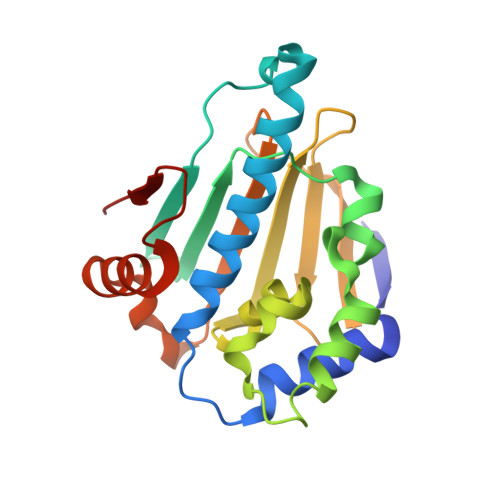Discovery of potent N-(isoxazol-5-yl)amides as HSP90 inhibitors.
Chen, D., Shen, A., Li, J., Shi, F., Chen, W., Ren, J., Liu, H., Xu, Y., Wang, X., Yang, X., Sun, Y., Yang, M., He, J., Wang, Y., Zhang, L., Huang, M., Geng, M., Xiong, B., Shen, J.(2014) Eur J Med Chem 87: 765-781
- PubMed: 25313505
- DOI: https://doi.org/10.1016/j.ejmech.2014.09.065
- Primary Citation of Related Structures:
4LWE, 4LWF, 4LWG, 4LWH, 4LWI - PubMed Abstract:
HSP90 is ubiquitously overexpressed in a broad spectrum of human cancers and has been recognized as an attractive target for cancer treatment. Here, we described the fragment screening, synthesis and structure-activity relationship studies of small molecule inhibitors with 4,5-diarylisoxazole scaffold targeting HSP90. Among them, the compound N-(3-(2,4-dihydroxy-5-isopropylphenyl)-4-(4-((4-morpholinopiperidin-1-yl)methyl)phenyl)isoxazol-5-yl)cyclopropanecarboxamide (108) showed high affinity for binding to HSP90 (FP binding assay, IC50 = 0.030 μM) and inhibited the proliferation of various human cancer cell lines with averaging GI50 about 88 nM. Compound 108 exhibited its functional inhibition of HSP90 by depleting key signaling pathways and concomitantly elevating of HSP70 and HSP27 in U-87MG cells. Further in vivo studies showed that compound 108 strongly suppressed the tumor growth of human glioblastoma xenograft model U-87MG with T/C = 18.35% at 50 mg/kg q3w/2.5w. Moreover, compound 108 also exhibited good pharmacokinetic properties. Together, our study implicates that compound 108 is a promising candidate of HSP90 inhibitor and is currently advanced to preclinical study.
- Department of Medicinal Chemistry, State Key Laboratory of Drug Research, Shanghai Institute of Materia Medica, Chinese Academy of Sciences, 555 Zuchongzhi Road, Shanghai 201203, China.
Organizational Affiliation:

















